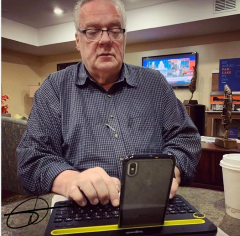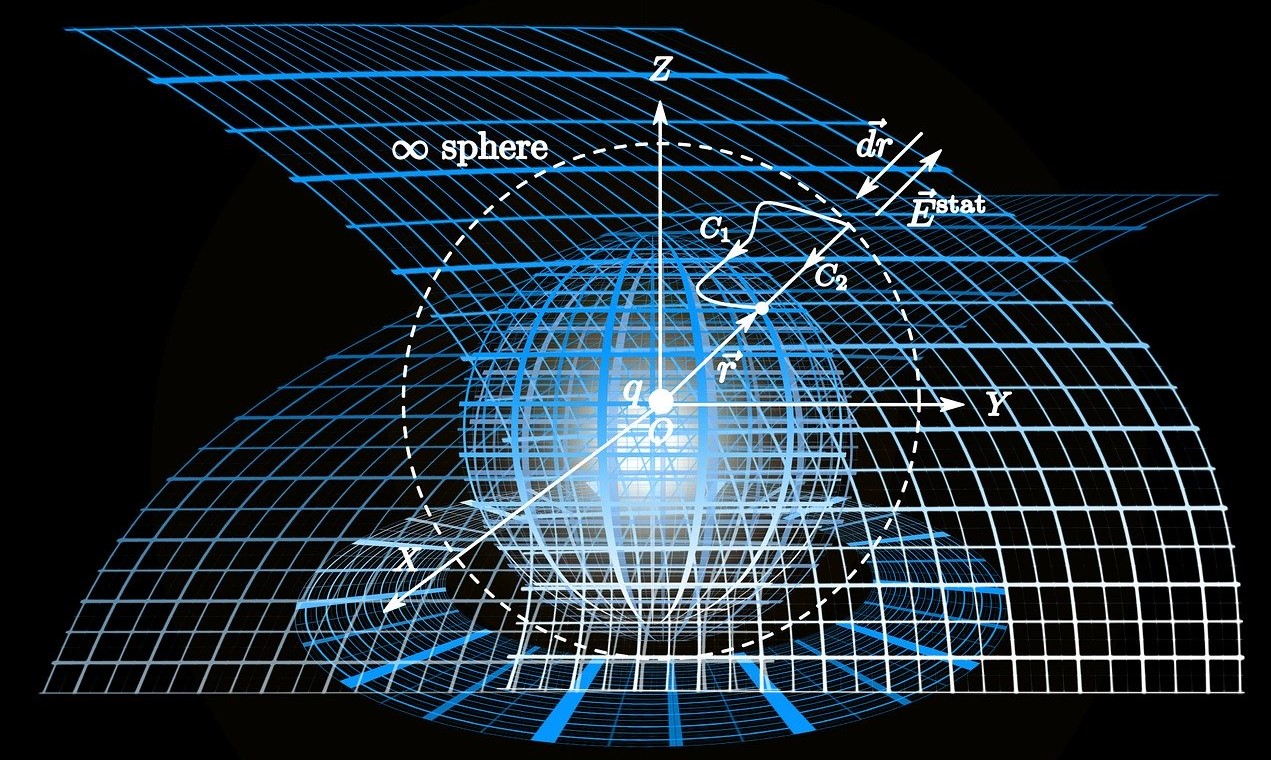In the waning days of the Seige of the Alamo, it was imagery that sounded forth that gives me thought today. Supposedly, when the final challenge is given to the defenders to surrender or face death, Colonel William Travis, commander of the Alamo defense forces, drew with his sword a line in the dirt. He asked his men to choose their fate: surrender and leave the Alamo, or cross the line and join him in defending the compound to the death, no turning back.
According to the tale, all but one of the Texas Heroes joined Travis on the other side of the dirt line.
Along with Colonel Travis, Jim Bowie (knife fame) and Davey Crockett (frontier fame) perished in the coming battle. There were approximately 200 defenders that perished and were most probably buried in a mass grave.
Today, there is a line at the Alamo of a strip of metal on the floor to represent the bravery of these men that fought against a superior force. Most do not even notice this line as they tour the rebuilt Alamo. But if you know it’s there, then consider this, these men were willing to give their lives for their idea of freedom.
Though the “line drawn” in the sand goes back to antiquity, for me, this one scene from my 8th Grade Texas History class made a great impression. It revolved around the idea of being so committed to something that you would be willing to cross a line and die for it.
Present Tense
Our lives are lived with lines drawn between believers of differing opinions. Whether they are opposing opinions of political dogma, greatest star, best truck (or engine), and even which computer to use. (BTW, I’m writing on my Microsoft Surface, but I am not opposed to other platforms. I do have an iPad and an iPhone. But I will never by a MAC… That’s one line I won’t cross!)
The list is endless. Best pie? Pecan. Best cake? Toss up between chocolate and pineapple upside down. Best M&M? Whoa! How low can you go?!
Well, we have gone lower. There are places we don’t want to think about because it represents the lowest of human ideas. Do I have to name them? No. But we know what I’m talking about.
Think about lit like this. Countries are defined by lines. Driving requires us to obey the lines! Every piece of ground is denoted by invisible lines until we put up a fence to define our space. All our sports are played with lines. Boundaries. Keeping the ball in play, or scoring happens only once a certain line is crossed.
Even mathematics uses lines as demarcations in equations. The latitude and longitude lines that circle our planet and are measured, though you cannot see them, they mark the magnetic circumference of our planet.
Lines are important. They challenge us to a better side or keep us from going too far. That’s the purpose of drawing lines. Choosing the best side, or keeping us from going too deep in the wrong direction.
Here’s My Thought Today
Regardless. Once we start drawing lines to separate us from others, we begin to create barriers. I’m on over here and you’re over there.
These are hard lines to erase. Difficult lines to ever reach over.
Once we start drawing lines to separate us from others, we begin to create barriers. I'm on over here and you're over there. These are hard lines to erase. Difficult lines to ever reach over. Share on XWhat happens when we keep drawing lines? With each line, our particular divided segment gets smaller and smaller. Maybe even weirdly shaped. There are continents with weirdly drawn lines that separate each country. How on earth did they get that way?
There will be a day, and maybe we’re there even today when we will no longer be able to unite. We become grouped by a narrow view of the world around us. Someone needs to reach across the aisle, boundary, barrier – visible or invisible, and reconnect the world.
This will mean that some of the lines we’ve drawn need to be erased. Or, at the very least, ignored for the purpose of unity.
Jesus
Even the words we use create imaginary lines that separate us from others. That’s what they were trying to do with Jesus. Get his words to draw lines that would prove which side he was on. Theirs? Or his own?
Now early in the morning He came again into the temple, and all the people came to Him, and He sat down and taught them.
Then the scribes and Pharisees brought to Him a woman caught in adultery. And when they had set her in the midst, they said to Him, “Teacher, this woman was caught in adultery, in the very act. Now Moses, in the law, commanded us that such should be stoned. But what do You say?”
This they said, testing Him, that they might have something of which to accuse Him.
But Jesus stooped down and wrote on the ground with His finger, as though He did not hear. So when they continued asking Him, He raised Himself up and said to them, “He who is without sin among you, let him throw a stone at her first.”
And again He stooped down and wrote on the ground.
Then those who heard it, being convicted by their conscience, went out one by one, beginning with the oldest even to the last. And Jesus was left alone, and the woman standing in the midst. When Jesus had raised Himself up and saw no one but the woman, He said to her, “Woman, where are those accusers of yours? Has no one condemned you?” She said, “No one, Lord.” And Jesus said to her,
“Neither do I condemn you; go and sin no more.”
(John 8:2-11 NKJV)
They were trying to use his words so they could draw lines between them and him…
But Notice…
What did Jesus do to defuse the situation? This is crucial to every attempt to draw lines that separate. How do you defuse it? You can choose to accept the line and simply say that’s life.
What did he draw in the sand? We’re not sure. Could it have been a line? Maybe. Regardless, he stayed neutral. No accusations. When he finally spoke he simply reminded everyone what the law allowed. If you have no sin, then you have the right to cast a stone. Everyone left. Why? Everyone must have felt their own sin weighing heavily on their minds.
In my spirit, I understood this on a basic level. They already had a line drawn in their sand. The Law, the Torah. This gave them the parameters of life, and this situation was on the other side of the Law.
If Jesus was drawing a line, and everyone left because of their sin, were they simply acknowledging his position. His side of the line? Maybe.
This brings me to my thinking process. I’m tired of lines that keep us from connecting to others. Everywhere I go, and to complete strangers, I’m willing to talk and listen, but sometimes the hardest thing is to do this with family. Why is it easier to talk to strangers?
Today
Today, I’m hesitant to draw lines. Well. Not exactly. I recently fenced my 5 acres to show the line others cannot cross. Hence, I believe we do need to draw a line between what we believe, tolerate, or despise. Just remember, you shouldn’t ever be able to back up and wish you could go the other way. Lines do not come today that should have been there in our past. They are not created by fad or some “enlightened” view. Lines are generally absolute, even when we don’t know they exist.
I think we could look at this line as something extra – it’s where I will never go back to that which I’ve pulled away from. Pick sin. Racism. Words. Ideologies. Dictators.
And when we draw lines in the sand with regard to certain basic things that are vital to our interest and to the interest of democracy and our friends around the world, we have to be willing to back that up.
~Fred Thompson
Remember. You get to choose your own line. Choose wisely.

